.OK, I have seven. BB, let me know about the other four! I'll start with my True Love, polyps. These are M. annularis, Boulder Star Coral। This coral grows in four different different formations, some flat plate, some boulder, some lobed, some mountainous. Recently Scientists have agreed to give them sub-group names because of this difference. OK?
.
This coral looks like this:
.
I named this coral Greenie, because seeing it like this it appear really a dark, rich green color. This is the mountainous form. I have a film photo from fifteen years ago when the barrel sponge on top was half this size, smaller than the coral. Sponges grow quickly sometimes. I fiddled with the color balance, but couldn't get it to look right. So much for digital, it has its limits.
So yesterday, I got smart and posted a photo similar to this next one, and said, "Can you count the number of different kinds of animals, and plants, in this photo?" And now I'm working on this post for two hours. Never again! lol
.
.This is the sponge. After I'd cropped it, and was planning to comment on the silt, I saw two faces! One on the right snarling wih a mouth full of silt, "Yechh!" and the other face on the left, saying "Heh, heh, heh."
.

.Some little critters, I know not what! Maybe Zoanthids, little critters. That's three.
.Four, the Banded Coral Shrimp. Look like little gorillas. They CAN give a nasty pinch with those little claws, sharp as needles.
.A red encrusting sponge. Five. And whitish algaes beside it, I didn't count them, I didn't count before I did this game.
।Mr. Eel! A Spotted Moray. Sorry about the poor focus.
One lady who was learning to dive, but hadn't been in the sea yet, told me that she was afraid of eels। OK. No problem. On our first open water dive, I found five of these guys. With my careful guidance, she even touched one. The eel's head was on one side of some coral, and his tail was on the other. I touched the tail first, just barely, and then she did.
When we got out of the water, I said, "How about all those eels?"
"What eels?"
I don't think she was afraid of them any more. She'd probably seen some stupid TV show, I didn't ask. Still, unless you know what you're doing, it's best to leave them alone.
Six.
।Scuzz and stuff beside the Eel. Seven? There's bound to be microscopic beasties in there. Funny eel, what a face!
Whew, all for now. Thanks for stopping by!
.




















































.jpg)



.jpg)
.jpg)
.jpg)
.jpg)
.jpg)
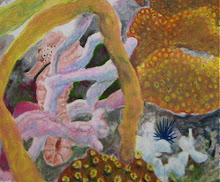.jpg)
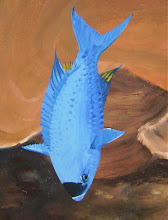.jpg)
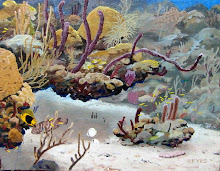.jpg)
.jpg)
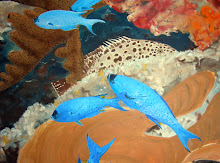.jpg)
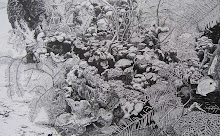.jpg)